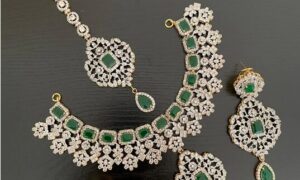The Evolution of Fashion: From Classic Elegance to Modern Statements
Fashion has always been an integral part of human expression. From the flowing robes of ancient civilizations to the minimalist and avant-garde designs of today, clothing has evolved to reflect cultural shifts, technological advancements, and individual creativity.
A Look Back at Classic Fashion
Historically, fashion was synonymous with status and identity. The intricate embroidery of the Renaissance era, the voluminous dresses of the Victorian age, and the tailored suits of the 20th century all signify the trends of their respective times. These styles not only showcased craftsmanship but also societal values—modesty, grandeur, or innovation.
Modern Trends: Where Creativity Meets Comfort
Today’s fashion landscape is a melting pot of ideas. Designers draw inspiration from various cultures, eras, and even technology. Athleisure has taken center stage, blending functionality with style, while sustainability has emerged as a critical consideration in production processes. Consumers are also gravitating toward pieces that tell a story, whether through bold prints, handcrafted details, or eco-friendly materials.
The Role of Lingerie in Modern Wardrobes
Lingerie has transitioned from being merely functional to becoming a significant aspect of fashion. It’s no longer hidden behind layers of clothing but is celebrated as a form of self-expression. Among the various categories, exotic lingerie stands out for its bold designs and intricate detailing. These pieces are not just about aesthetics; they empower individuals by making them feel confident and unique.
Accessories and Beyond
Fashion extends beyond clothing to include accessories that complete a look. From statement necklaces to minimalist watches, the right accessory can elevate even the simplest outfit. Footwear, handbags, and even eyewear are no longer just functional items but are considered essential elements of personal style.
The Digital Revolution in Fashion Retail
The way we shop for fashion has undergone a dramatic transformation. E-commerce platforms have democratized access to fashion, allowing consumers to browse and purchase items from around the globe. Social media influences have become powerful forces in shaping trends, with platforms like Instagram and TikTok turning street style into viral sensations overnight. This digital transformation has also led to the rise of virtual influencers and digital fashion shows, challenging traditional industry norms.
Inclusive Fashion
A New Era Perhaps the most significant evolution in modern fashion is the growing emphasis on inclusivity. Designers and brands are finally embracing diversity in all its forms—size, age, gender, and ethnicity. Adaptive fashion for people with disabilities has gained prominence, while gender-neutral clothing continues to challenge traditional fashion boundaries. This shift reflects a broader societal movement toward acceptance and representation, proving that fashion can be both a mirror of social progress and a catalyst for change.
The Future of Fashion
As technology continues to advance, the fashion industry is poised for even greater innovation. Virtual try-ons, AI-driven personalization, and sustainable materials made from recycled or biodegradable components are shaping the future of what we wear. The rise of digital fashion—clothes designed to exist only in the virtual world—is also gaining traction, offering endless possibilities for creativity without the environmental impact.
In conclusion, fashion remains a powerful form of self-expression and cultural dialogue. Whether through classic elegance or modern statements like exotic lingerie, the industry continues to redefine itself, embracing both tradition and innovation.



































